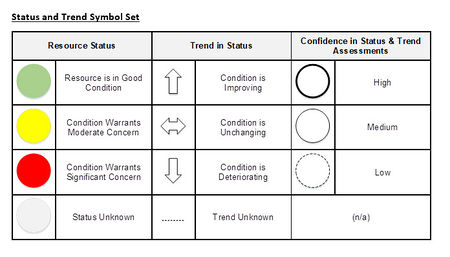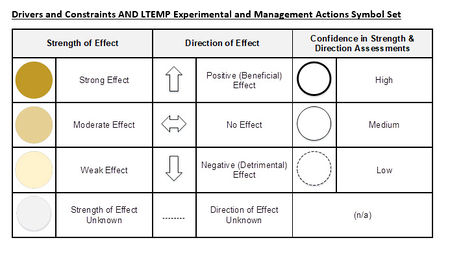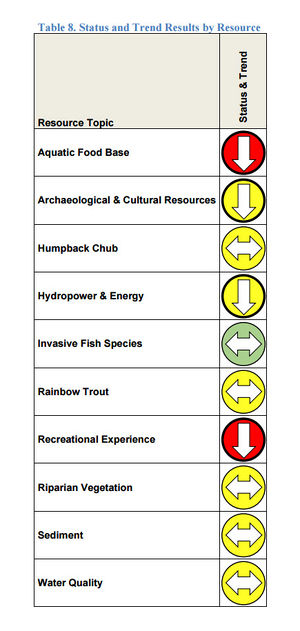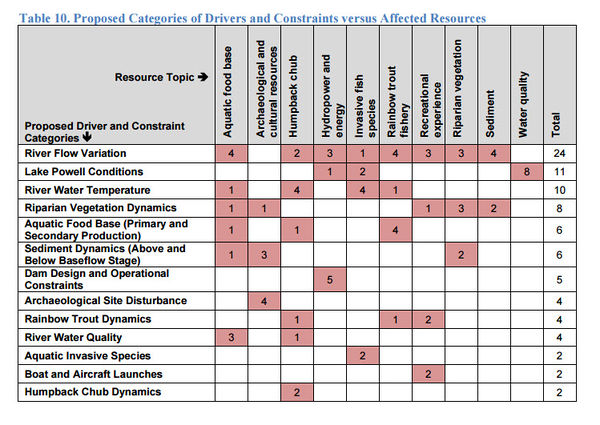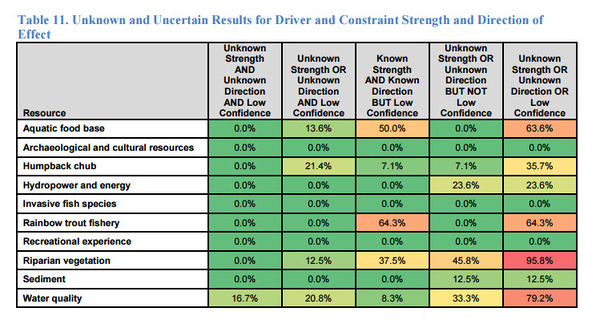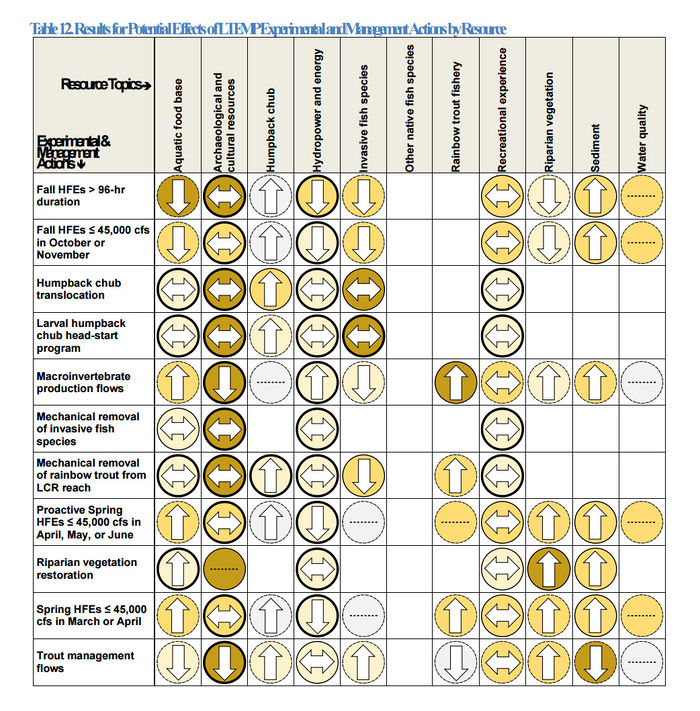Difference between revisions of "2017 Knowledge Assessment"
Cellsworth (Talk | contribs) |
Cellsworth (Talk | contribs) |
||
| Line 51: | Line 51: | ||
|class="MainPageBG" style="width:55%; border:1px solid #cef2e0; background:#f5faff; vertical-align:top; color:#000;"| | |class="MainPageBG" style="width:55%; border:1px solid #cef2e0; background:#f5faff; vertical-align:top; color:#000;"| | ||
{|width="100%" cellpadding="2" cellspacing="5" style="vertical-align:top; background:#f5faff;" | {|width="100%" cellpadding="2" cellspacing="5" style="vertical-align:top; background:#f5faff;" | ||
| − | ! <h2 style="margin:0; background:#cedff2; font-size:120%; font-weight:bold; border:1px solid #a3bfb1; text-align:left; color:#000; padding:0.2em 0.4em;">Report Summary</h2> | + | ! <h2 style="margin:0; background:#cedff2; font-size:120%; font-weight:bold; border:1px solid #a3bfb1; text-align:left; color:#000; padding:0.2em 0.4em;">[[Media:GCDAMP FY 2017 Knowledge Assessment-Science Advisor Program Final Report 2017-04-30.pdf| Report Summary]]</h2> |
|} | |} | ||
| Line 61: | Line 61: | ||
More specifically, the FY 2017 KA posed three sets of core questions for each of the eleven focal resource topics: <br> | More specifically, the FY 2017 KA posed three sets of core questions for each of the eleven focal resource topics: <br> | ||
| − | + | '''Status and Trend''' | |
*What is the present understanding of the status of the condition(s) addressed by the topic? | *What is the present understanding of the status of the condition(s) addressed by the topic? | ||
*What is the present understanding of the direction of any trend(s) in these conditions? | *What is the present understanding of the direction of any trend(s) in these conditions? | ||
*How certain or uncertain is this understanding? | *How certain or uncertain is this understanding? | ||
| − | + | '''Drivers and Constraints''' | |
*What is the present understanding of the drivers and constraints that most significantly shape the status and trends in these conditions? | *What is the present understanding of the drivers and constraints that most significantly shape the status and trends in these conditions? | ||
*What is the present understanding of the strength and direction of these effects? | *What is the present understanding of the strength and direction of these effects? | ||
*How certain or uncertain is this understanding? | *How certain or uncertain is this understanding? | ||
| − | + | '''Effects of Experimental and Management Actions''' | |
*What is the present understanding of the ways in which each type of LTEMP experimental or management action could affect the status and trends in these conditions? | *What is the present understanding of the ways in which each type of LTEMP experimental or management action could affect the status and trends in these conditions? | ||
*What is the present understanding of the likely strength and direction of these effects? | *What is the present understanding of the likely strength and direction of these effects? | ||
*How certain or uncertain is this understanding? | *How certain or uncertain is this understanding? | ||
| − | The last of these three sets of questions focused on eleven specific experimental management actions identified in the LTEMP FEIS and ROD as features of the Preferred Alternative: | + | The last of these three sets of questions focused on eleven specific '''experimental management actions''' identified in the LTEMP FEIS and ROD as features of the Preferred Alternative: |
*Fall High-Flow Experiments [HFEs] > 96‐hr duration but ≤ 45,000 cfs in October or November | *Fall High-Flow Experiments [HFEs] > 96‐hr duration but ≤ 45,000 cfs in October or November | ||
*Fall HFEs < 96‐hr duration but ≤ 45,000 cfs in October or November | *Fall HFEs < 96‐hr duration but ≤ 45,000 cfs in October or November | ||
| Line 87: | Line 87: | ||
*Trout management flows | *Trout management flows | ||
| − | The Preferred Alternative in the LTEMP FEIS and ROD also includes summer low flow | + | The Preferred Alternative in the LTEMP FEIS and ROD also includes '''summer low flow experiments'''. However, these will not be attempted until during the second 10 years of |
| − | experiments. However, these will not be attempted until during the second 10 years of | + | implementation of the LTEMP. The FY 2017 Knowledge Assessment focused on topics that |
| + | might bear on the GCDAMP Triennial Work Plan for FY 2018-2020 and therefore did not | ||
| + | address the potential effects of summer low-flow experiments. | ||
| + | |||
| + | Through its answers to the three sets of core questions presented above, '''the FY 2017 Knowledge Assessment sought to:''' | ||
| + | *Summarize information on status, trends, and the state of knowledge for the eleven focal resource topics. | ||
| + | *Document the state of knowledge of how antecedent conditions (external drivers and constraints) may affect the outcomes of different management actions. | ||
| + | *Identify potential needs for continuing, increasing, reducing, revising, or adding monitoring, research, and other information-gathering efforts to address potentially crucial gaps in knowledge. | ||
=='''Status and Trends''' == | =='''Status and Trends''' == | ||
| Line 103: | Line 110: | ||
a net improving trend in status. Tables outlining status and trends for each resource characteristic can be found [[Media:GCDAMP FY 2017 Knowledge Assessment Status & Trend Summary Results Final 2017-04-24.pdf | '''here''']]. | a net improving trend in status. Tables outlining status and trends for each resource characteristic can be found [[Media:GCDAMP FY 2017 Knowledge Assessment Status & Trend Summary Results Final 2017-04-24.pdf | '''here''']]. | ||
| − | [[File:StatusTrendResource.jpg|center| | + | [[File:StatusTrendResource.jpg|center|300px]] |
=='''Drivers and Constraints''' == | =='''Drivers and Constraints''' == | ||
| Line 114: | Line 121: | ||
sediment dynamics (above and below baseflow stage). | sediment dynamics (above and below baseflow stage). | ||
| − | [[File:DC Resource.jpg|center| | + | Unfortunately, there is no |
| − | [[File:DC Resource2.jpg|center| | + | simple way to summarize these results. As explained earlier (see Roll-Up Method, above), it is |
| + | not meaningful to average the rating values for the drivers and constraints affecting an entire | ||
| + | resource topic across all associated resource characteristics. In addition, each expert team | ||
| + | independently developed its own list of drivers and constraints. This produced a total of 88 | ||
| + | different driver and constraint names, with no two expert teams using the same names for any | ||
| + | drivers and constraints. As a result, it is not possible to directly compare the ratings for | ||
| + | individual drivers across resource topics. | ||
| + | |||
| + | However, it is possible to organize the 88 drivers and constraints into a smaller number of | ||
| + | categories. Table 10 identifies 13 categories or types of drivers and constraints, incorporating all | ||
| + | 88 original “raw” types identified by the ten expert teams (see Appendix C). Other groupings are | ||
| + | possible (see Recommendations, below). Table 10 also shows the numbers of individual drivers | ||
| + | and constraints in each category, both overall and for each affected resource. Table 10 lists the | ||
| + | proposed driver/constraint categories in order based on their overall frequency of identification | ||
| + | across all resource topics. | ||
| + | |||
| + | [[File:DC Resource.jpg|center|600px]] | ||
| + | [[File:DC Resource2.jpg|center|600px]] | ||
=='''Effects of LTEMP Experimental and Management Actions''' == | =='''Effects of LTEMP Experimental and Management Actions''' == | ||
| Line 130: | Line 154: | ||
individual resource characteristics. | individual resource characteristics. | ||
| − | [[File:EMA Resource.jpg|center| | + | [[File:EMA Resource.jpg|center|700px]] |
The assessments of status and trend, drivers and constraints, and the potential effects of LTEMP | The assessments of status and trend, drivers and constraints, and the potential effects of LTEMP | ||
| Line 151: | Line 175: | ||
each resource topic. | each resource topic. | ||
| − | |||
| − | |||
| − | |||
| − | |||
| − | |||
| − | |||
| − | |||
| − | |||
| − | |||
| − | |||
| − | |||
| − | |||
| − | |||
| − | |||
| − | |||
| − | |||
| − | |||
| − | |||
| − | |||
| − | |||
| − | |||
| − | |||
| − | |||
| − | |||
| − | |||
| − | |||
<!-- | <!-- | ||
| Line 215: | Line 213: | ||
*[https://www.usbr.gov/uc/rm/amp/amwg/mtgs/17feb15/Knowledge%20Assessment.pdf AMWG: Knowledge Assessment Update ] | *[https://www.usbr.gov/uc/rm/amp/amwg/mtgs/17feb15/Knowledge%20Assessment.pdf AMWG: Knowledge Assessment Update ] | ||
*[https://www.usbr.gov/uc/rm/amp/twg/mtgs/17jan26/A4_Shanahan.pdf TWG: Review of the 2017 ARM and Discussion of Knowledge Assessment] | *[https://www.usbr.gov/uc/rm/amp/twg/mtgs/17jan26/A4_Shanahan.pdf TWG: Review of the 2017 ARM and Discussion of Knowledge Assessment] | ||
| + | |||
| + | |- | ||
| + | ! <h2 style="margin:0; background:#cedff2; font-size:120%; font-weight:bold; border:1px solid #a3b0bf; text-align:left; color:#000; padding:0.2em 0.4em;"> Results Summary</h2> | ||
| + | |- | ||
| + | |style="color:#000;"| | ||
| + | |||
| + | The results of the FY 2017 KA indicate that the expert teams considered most of the resources to | ||
| + | have current statuses of “Moderate Concern,” with two – aquatic food base and recreational | ||
| + | experience – having current statuses of “Significant Concern” and only one – invasive fish | ||
| + | species (nonnative invasive species) – having a current status of “Good Condition.” As noted | ||
| + | above, the “Good” rating for the current status of invasive fish species refers to the level of threat | ||
| + | posed by these species. The results for this one resource indicate that, overall across all invasive | ||
| + | fish species of interest, the net threat currently posed by these species is not a matter of concern. | ||
| + | At the same time, however, the expert teams consider most of the resources currently to be | ||
| + | experiencing either no trend or a deteriorating trend in status. No resource was recognized as | ||
| + | experiencing an improving trend. The four resources identified as experiencing deteriorating | ||
| + | trends are the aquatic food base, archaeological and cultural resources, hydropower and energy, | ||
| + | and the recreational experience. | ||
| + | |||
| + | |- | ||
| + | ! <h2 style="margin:0; background:#cedff2; font-size:120%; font-weight:bold; border:1px solid #a3b0bf; text-align:left; color:#000; padding:0.2em 0.4em;"> Recommendations </h2> | ||
| + | |- | ||
| + | |style="color:#000;"| | ||
| + | |||
| + | ===What to Assess and When=== | ||
| + | *Establish a regular schedule of knowledge assessments, integrated with the development of at least the triennial work plans and the cumulative findings of the Annual Reporting cycle. | ||
| + | *The TWG and GCMRC need not repeat the assessment of knowledge about the potential effects of the LTEMP experimental and management actions. | ||
| + | *Every effort should be made to include the assessment of “Other Native Fishes” in all future KAs. | ||
| + | *Every effort should be made to ensure that future KAs include the assessment of “Tribal Resources,” however these come to be defined. | ||
| + | *The TWG and GCMRC should consider expanding the assessment of the “Natural Processes” resource topic to include processes other than the two included in the FY 2017 KA. | ||
| + | *The LTEMP and its ROD limit the “Nonnative Invasive Species” resource topic to invasive aquatic organisms, but do not limit it to fishes. The TWG and GCMRC should consider expanding the assessment of this topic to include other aquatic invasive species if ecologically appropriate. | ||
| + | |||
| + | ===Assessment Structure and Process=== | ||
| + | *The TWG should make clear from the outset precisely what objectives the expert teams should to use for each resource topic, against which to assess status and trend. | ||
| + | *The process and its guidance need to be improved to encourage the expert teams to address a smaller number of truly “key” resource characteristics for each focal resource. | ||
| + | *The expert teams need to be encouraged to read and follow the formal guidance for the KA – and conversely to provide feedback on how the guidance could be improved. | ||
| + | *Integration of the work of the individual expert teams could be improved by developing a standard, master list of drivers and constraints. | ||
| + | *The FY 2017 KA did not address or could have better addressed some environmental factors that recent Annual Reporting Meetings, past KAs, and GCMRC publications have identified as potentially relevant to the GCDAMP. | ||
| + | *Integration of the results from repeated KAs would also benefit from the development of standardized lists of resource characteristics for each focal resource topic, the GCDAMP FY 2017 Knowledge Assessment Final Report, Executive Coordinator for the Science Advisors Program examination of which could be repeated in successive KAs. | ||
| + | *The KA process would benefit from the formal inclusion of the effort in annual or triennial work plans, so that all participating experts know this will be an expected matter of attention. | ||
| + | *The schedule for each KA should include a more formally recognized period or opportunity for all stakeholders to provide feedback to the expert teams. | ||
| + | *The TWG has proposed, and Reclamation and the SAP-EC have requested in the draft FY 2018-2020 Triennial Work Plan and Budget, that the GCDAMP re-establish a “Standing Panel” as part of the SAP, to provide routine review services to the GCDAMP. | ||
| + | |||
| + | ===Spreadsheet Tool=== | ||
| + | *The FY 2017 KA expert teams – or at least the team leaders – should be polled for feedback on the spreadsheet tool, on ways in which the tool or its associated guidance might be improved. | ||
| + | *The spreadsheet should include places where the expert teams can or record or find several additional pieces of information, including: | ||
| + | #Explicit documentation of the objectives and benchmarks used for assessing status and trend | ||
| + | #The definitions of all resource characteristics and technical measures addressed in the KA | ||
| + | #The definitions of all drivers and constraints addressed in the KA (see recommendations above on Knowledge Assessment Structure and Process) | ||
| + | #Citations for important reference works relevant to ratings and considered in rationale narratives. | ||
| + | *The “Unknown” category for status, trend, strength, and direction could be split into two variants to recognize two possibilities: there may not be enough evidence with which to even attempt an assessment, or the available evidence, while perhaps nominally sufficiently plentiful, may be too “noisy” to support any firm conclusion. | ||
| + | *The guidance provided with the spreadsheet tool, and the Data Validation functions incorporated into the tool, should be improved to promote greater consistency in how the expert teams fill in the tables in the tool. | ||
|- | |- | ||
Revision as of 14:13, 3 May 2017
|
|
2017 Knowledge Assessment (KA)The FY 2017 KA had three objectives:
The resulting information provides crucial guidance for work planning and budgeting. The TWG also conceived the FY 2017 KA as a trial with two additional objectives:
The present (FY 2017) knowledge assessment is timed to coincide with and inform the Annual Reporting process and development of the next GCDAMP Triennial Work Plan for FY 2018-2020. This knowledge assessment is testing a methodology for better organizing, displaying, and communicating its findings, potentially to carry forward to guide future knowledge assessments as well. [1] |
| -- |
-- |
-- |
|---|
The FY 2017 KA addressed three broad spheres of knowledge for each of these eleven focal resource topics:
More specifically, the FY 2017 KA posed three sets of core questions for each of the eleven focal resource topics:
Drivers and Constraints
Effects of Experimental and Management Actions
The last of these three sets of questions focused on eleven specific experimental management actions identified in the LTEMP FEIS and ROD as features of the Preferred Alternative:
The Preferred Alternative in the LTEMP FEIS and ROD also includes summer low flow experiments. However, these will not be attempted until during the second 10 years of implementation of the LTEMP. The FY 2017 Knowledge Assessment focused on topics that might bear on the GCDAMP Triennial Work Plan for FY 2018-2020 and therefore did not address the potential effects of summer low-flow experiments. Through its answers to the three sets of core questions presented above, the FY 2017 Knowledge Assessment sought to:
Status and TrendsThe experts for the other ten resources assessed the current status of seven overall as meeting the criteria for “Moderate Concern,” and assessed two, aquatic food base and recreational experience, as meeting the criteria for “Significant Concern” overall. Only one resource, invasive fish species (nonnative invasive species), received an overall rating of “Good Condition.” Since this last resource topic focuses on a threat, its status indicates that, nonnatives, invasive fish species overall currently pose only a limited threat to other species in the system. However, the expert teams consider six of the ten assessed resources currently to be experiencing either no net trend in status, and four – aquatic food base, archaeological and cultural resources, hydropower and energy, and the recreational experience – to be experiencing deteriorating trends in status. The experts did not identify any resource as currently experiencing a net improving trend in status. Tables outlining status and trends for each resource characteristic can be found here. Drivers and ConstraintsThe assessment of drivers and constraints identified numerous factors that influence the status of the ten assessed focal resources. These factors fall into thirteen proposed overarching categories: aquatic food base dynamics (primary and secondary production), aquatic invasive species, archaeological site disturbance, boat and aircraft launches, dam design and operational constraints, humpback chub dynamics, Lake Powell conditions, rainbow trout dynamics, riparian vegetation dynamics, river flow variation, river water quality, river water temperature, and sediment dynamics (above and below baseflow stage). Unfortunately, there is no simple way to summarize these results. As explained earlier (see Roll-Up Method, above), it is not meaningful to average the rating values for the drivers and constraints affecting an entire resource topic across all associated resource characteristics. In addition, each expert team independently developed its own list of drivers and constraints. This produced a total of 88 different driver and constraint names, with no two expert teams using the same names for any drivers and constraints. As a result, it is not possible to directly compare the ratings for individual drivers across resource topics. However, it is possible to organize the 88 drivers and constraints into a smaller number of categories. Table 10 identifies 13 categories or types of drivers and constraints, incorporating all 88 original “raw” types identified by the ten expert teams (see Appendix C). Other groupings are possible (see Recommendations, below). Table 10 also shows the numbers of individual drivers and constraints in each category, both overall and for each affected resource. Table 10 lists the proposed driver/constraint categories in order based on their overall frequency of identification across all resource topics. Effects of LTEMP Experimental and Management ActionsThe results in Table 12 indicate that the expert teams expect the net effects of the various LTEMP experimental and management actions (across all resource characteristics for the ten resources) to be a “mixed bag.” Each action is expected to have a mixture of net positive to negative and net strong to weak effects on each of the ten resources, on average across all the individual resource characteristics for each resource. No single action is expected to consistently provide a net benefit to all resources. Similarly, with the exception of recreational experience, no single resource is expected to be affected consistently by all actions. In the case of recreational experience, the results indicate that the expert team expects the net effects of all actions on all resource characteristics to be neutral (neither positive nor negative). However, the tables in Appendix D show that these average effects mask a range of variation in effects across individual resource characteristics. The assessments of status and trend, drivers and constraints, and the potential effects of LTEMP experimental and management actions for the ten assessed resources also identified numerous gaps and areas of uncertainty in critical knowledge. The resources with the highest frequencies of such gaps and uncertainties were (in descending order of frequency): water quality, riparian vegetation, the rainbow trout fishery, the aquatic food base, humpback chub, invasive fish species, and sediment. The raw spreadsheet entries indicate that the expert teams reported these gaps and uncertainties because of difficulties with unclear or undefined management objectives for individual resource characteristics; temporal or spatial gaps in the available data; insufficient numbers of suitable data points; or high temporal or spatial variability in the available data. These findings highlight topics that could benefit from improved management objectives, continuing and/or improved monitoring, and/or research to address critical gaps and uncertainties. The concluding recommendations identify needs and opportunities for the TWG and GCMRC to improve the assessment methods and their implementation under five headings: What to assess and when, assessment structure and process, the spreadsheet tool, the scorecard display system, and the default method used to average together the findings across multiple lines of evidence for each resource topic.
|
|
